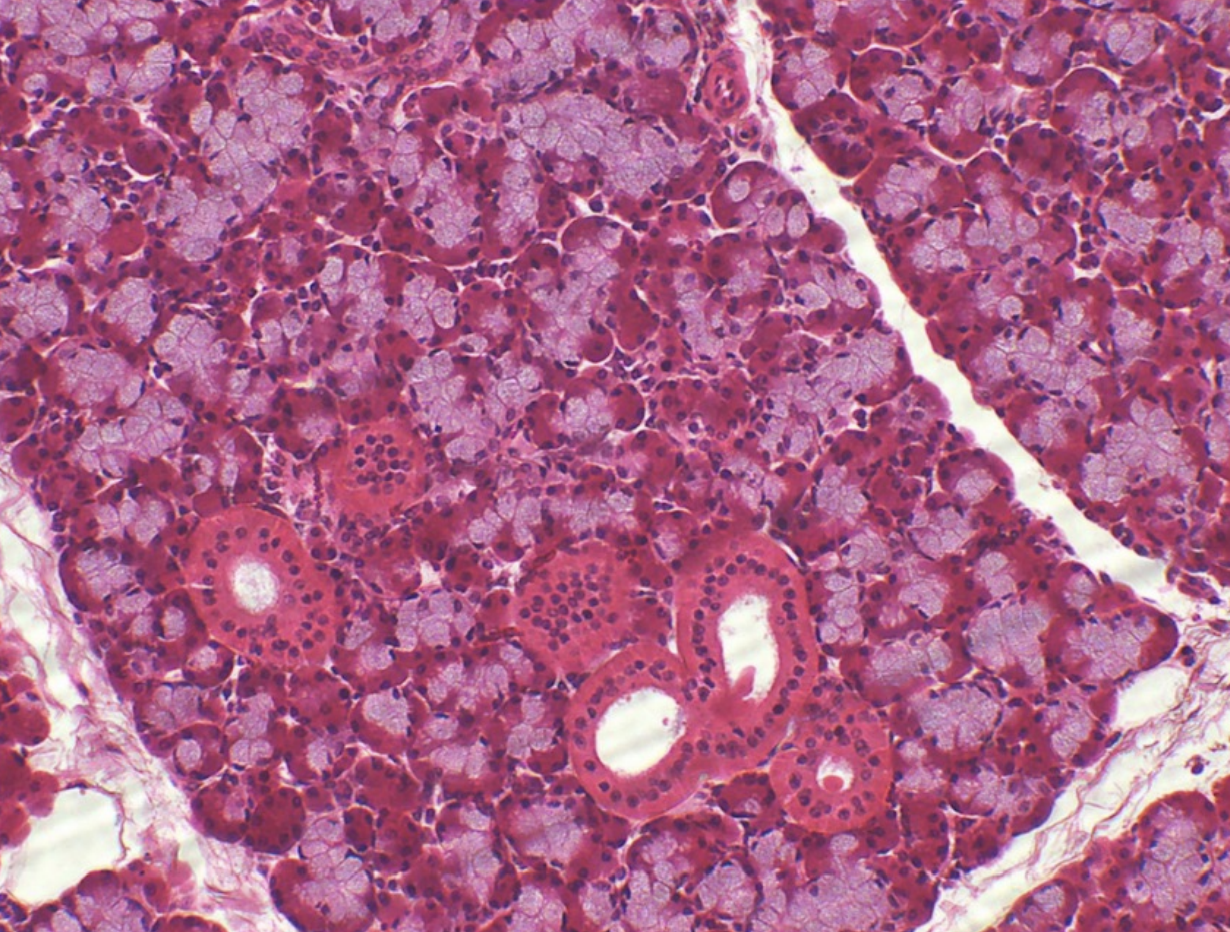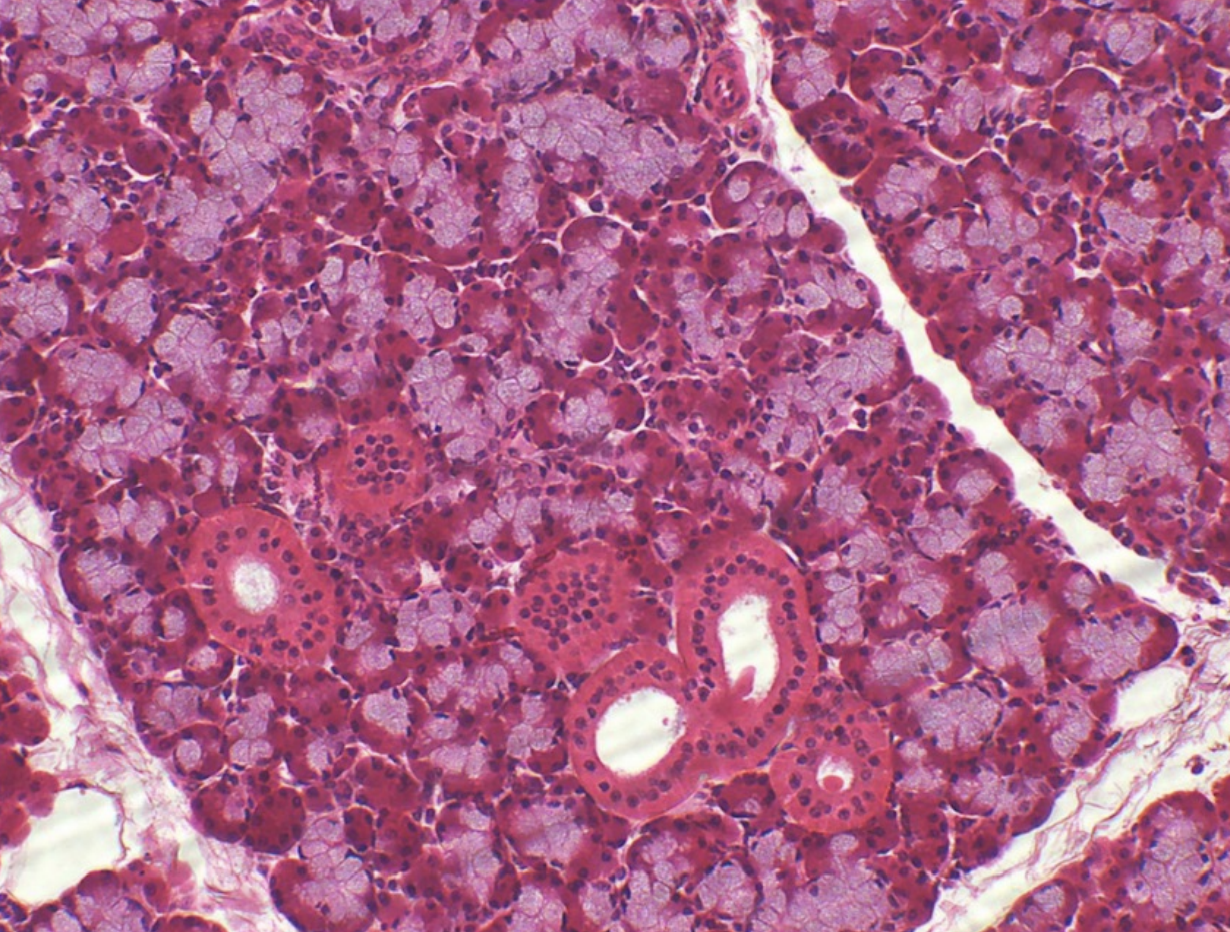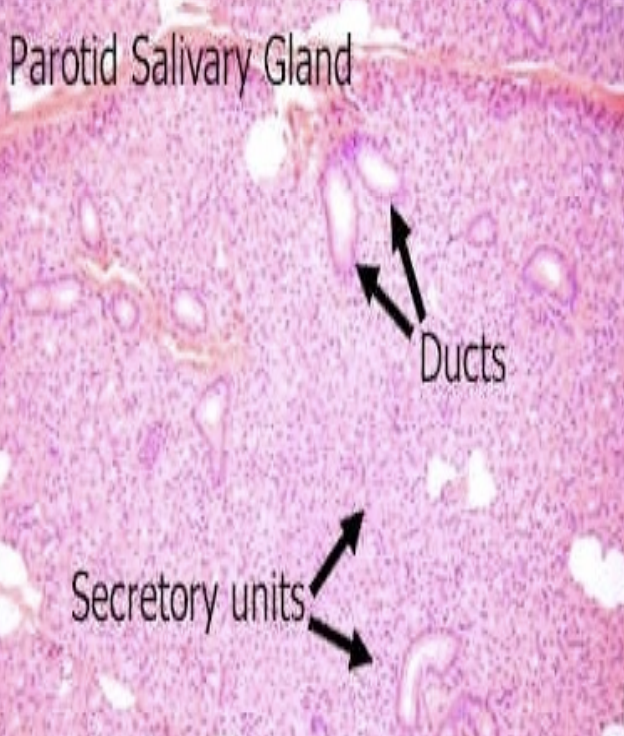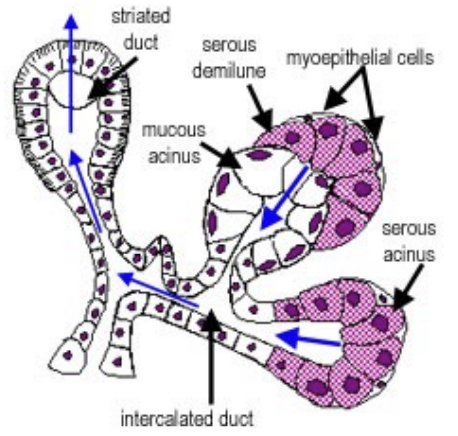Histology of Salivary Gland
1/5
There's no tags or description
Looks like no tags are added yet.
Name | Mastery | Learn | Test | Matching | Spaced |
|---|
No study sessions yet.
6 Terms

Differentiate Serous and Mucous Glands
Nucleus
Secretion
Serous:
Nucleus: Round and circular
Secretion: Thinner
Mucous:
Nucleus: Flattened and basal
Secretion: Thicker
Cytoplasm: Foamy

Salivary Glands
Consist of
Originate from
3 major salivary glands
Type of secretory cell
Consist of: Series of secretory units (glandular epithelium)
Originate from: Oral ectoderm, but grows in to underlying mesoderm
3 major salivary glands:
Parotid
Secretory cell: Serous
Sublingual
Secretory cell: Mucous
Submandibular
Secretory cell: Mixed
Histological Structure of Salivary Gland
What divides each lobules
What is lobule made up of
Types of ducts
What divides each lobules: Connective tissue capsule
What is lobule made up of: Secretory unit
Types of ducts: Intralobular and Interlobular
Intralobular vs Interlobular Duct
Location
Types
Function
Histology
Intralobular Duct:
Location: Inside lobule
Types: Intercalated and striated ducts
Function:
Intercalated: Collect secretions
Striated: Modify secretions
Histology: Simple cuboidal (one layer of cells)
Interlobular Duct:
Location: Between lobules
Function: Collects from multiple intralobular ducts and transports it towards main excretory duct
Histology: Stratified columnar (multiple layers of cell)
Salivary Gland: Parotid Gland #ff8e00
Compose of what secretory unit
Lobules separated by
Contains
Secrete into
Lined with
Compose of what secretory unit: Serous secretory unit
Lobules separated by: Loose connective septa
Contains:
Nerves
Blood vessels
Larger secretory ducts
Secrete into: Intercalated ducts
Lined with: Low cuboidal epithelium


Salivary Gland: Submandibular Gland
Type of secretion
Lobules separated by
Contains
Which cells form main lining
Which cells form periphery lining
When grouped together, they are called
Each secretory unit surrounded by
Function
Type of secretion: Mixed, either serous or mucous
Lobules separated by: Loose connective septae
Contains:
Nerves
Blood vessels
Secretory ducts
Which cells form main lining: Mucous secreting cells
Which cells form periphery lining: Serous secreting cells
When grouped together, they are called: Serous demilune
Each secretory unit surrounded by: Contractile myoepithlial cells
Function: Contract and squeeze contents of lumen into duct
